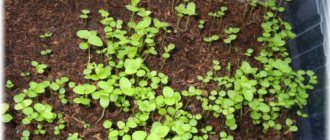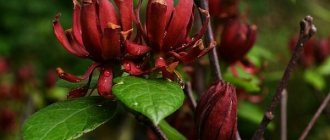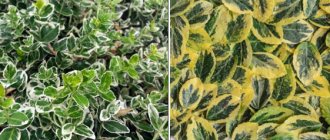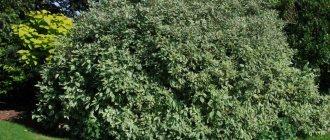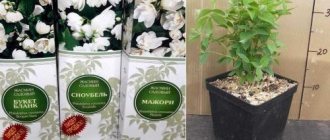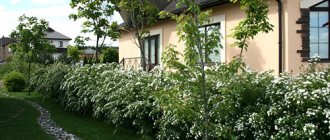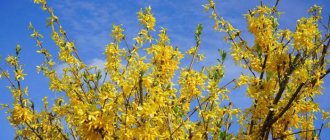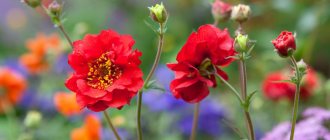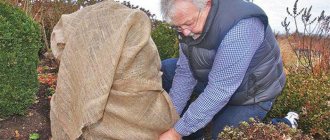China is considered the birthplace of buddleia. Although America, Asia and South Africa, as in the case of the marsh saxifrage from our article, also boast thickets of this shrub.
And it owes its name to the seventeenth-century English botanist Adam Boodle. In England it was called orange-eyed bush because of the orange center of the flowers. The honey smell of the plant is similar to the aroma of hyacinths. It is pollinated, like the zinnia varieties described earlier, by large beautiful butterflies.
That is why it is called a butterfly magnet. Later, the flowering of its inflorescences gave it its name - autumn lilac.
Flower growers value buddleias for their large, curving racemes that bloom in the fall, as do some types of snapdragons. This is especially important, as it allows you to decorate the landscape, even at a time when all other plants, including those grown from nasturtium seeds, have already bloomed.
Growing buddleia from seeds: sowing seedlings and caring for seedlings before planting in the ground
So, of all the methods of propagating buddleia, you chose the seed method, although it is no less economical and convenient to grow a shrub from a cutting, but finding a seedling is much more difficult and its price can be steep.
Well, next we’ll talk about how to plant and grow buddleia seedlings from seeds.
Note! Buddleia grows very quickly, so don’t think that you will have to wait long after sowing the seeds. Already in the first year it can bloom , and the next year the bushes will grow quite high (they will bloom even more abundantly).
Types and varieties of buddleia with photos and names
Buddleja davidii
Buddleja Davidii 'Orpheus' variety Buddleja davidii 'Orpheus' photo
The species is a deciduous shrub 3 m high. The growth rate is fast. The leaf blades are lanceolate in shape, the surface is dark green, the underside is pubescent and has a pale yellow tint. Spike-shaped inflorescences, consisting of small lilac flowers, reach a length of 40 cm. Flowering lasts from August to the end of October.
Varieties:
Buddleja Davidii 'Nanho Alba' photo
Growing buddleia from seeds: timing and planting rules
When to sow seedlings
When choosing the time for sowing buddleia seeds, it is worth knowing that seedlings become quite suitable for planting approximately 2.5-3 months after germination, which means that the approximate time for sowing buddleia seedlings is the second half of February-March . Just in time for May-June, the seedlings will be ready to change their place of residence from temporary to permanent.
Selecting a suitable container and soil
For the initial sowing of seeds for seedlings, you will need a small and shallow container , for example, a food-grade plastic container with a lid or a similar rectangular bowl.
Then you will need to plant the grown buddleia seedlings into larger individual containers such as plastic cups or cassettes.
The soil for growing buddleia requires light and loose soil. It is optimal to purchase a universal peat-based soil, to which you add river sand or perlite to make it even more loose (if it does not already contain loosening additives).
Note! -disinfect any soil, even purchased soil , for example by steaming it in an oven or microwave, so that all pathogenic organisms (pests) and fungi are killed under the influence of high temperatures. Or (and you can do both) spilling a pink solution of potassium permanganate (not very effective) or Fitosporin .
Seed preparation
Buddleia seeds do not require any preparation; they can be sown dry immediately.
Worth knowing! The seeds are very small, even smaller than those of petunia.
Direct sowing
Step-by-step instructions for sowing buddleia seeds for seedlings:
- Fill the planting container with soil.
- Moisten the surface generously.
- Try to scatter the seeds as evenly as possible over the surface of the soil.
The seeds are very small (“fine dust”), so you need to scatter them directly from the bag. Alternatively, you can pre-mix it with river sand.
- Close the lid (if you have a plastic container) or cover with a bag or film to create a greenhouse effect (warm and humid).
- Place in a bright and warm place (temperature +22-25 degrees).
Think! There is an opinion that when you sow seeds on the surface of the soil, they require light to germinate, however, this is not entirely true. They will need light immediately after pipping, otherwise the small seedlings will immediately stretch out.
Growing buddleia in the garden
After planting David's white buddleia, it is necessary to organize competent care for the young plant.
It requires timely watering, fertilizing and pruning; it is recommended not to neglect the prevention of diseases and pests.
Pruning is necessary to form a bush: after the procedure it looks neater, and in the future it will please with abundant flowering.
In spring, tall buddleias are pruned to 90 cm from the ground, and low-growing varieties to 30 cm. In summer, fading inflorescences are pruned.
Watering schedule
It is recommended to moisten young seedlings daily until the root system is strengthened. As the shrub develops, watering is reduced; adult plants are not watered. This is due to the fact that buddleia has very strong roots that can reach groundwater. Provides the necessary amount of moisture to the plant and precipitation.
During periods of drought, 1-2 times every 7 days, 10 liters of warm and settled water are poured under each bush.
Feeding Buddleia
Application of fertilizers to the soil is required from the 2nd year of the bush’s life. The procedure is carried out twice per season: in May and July.
The following are used as fertilizers for buddleia:
- additives containing minerals (20-25 g dissolved in 10 liters of water);
- a mixture of mullein (1 liter of manure) and superphosphate (15-20 g): the finished fertilizer is diluted with water and applied to the soil;
- chicken droppings with the addition of potassium sulfate (15-20 g of the substance and 0.5 liters of droppings are mixed in a container).
Is it necessary to mulch?
It is not advisable to loosen the soil around the buddleia: there is a high risk of damage to the root system. To ensure the supply of oxygen to the plant, the soil is mulched. To do this, use available materials: peat, humus or sand, fallen leaves.
When to transplant a Budleya to another place?
Moving the bush to another area is not recommended. Buddleia, due to its strong root system, does not tolerate a change of residence very well, therefore, as an alternative, a cutting is separated from it and transplanted to the desired location.
If it is necessary to transfer the shrub, remove it from the ground, preserving the integrity of the roots as much as possible, place it in a new hole, cover it with earth and water it abundantly.
How to care for buddleia seedlings after germination
When the first shoots appear (usually this happens after 2-4 weeks), the container should be opened ( remove the cover ) and moved for 2-3 days to a cooler place - +16-18 degrees, then raise the temperature again - to +18-20 degrees _
Since sowing took place superficially , the entire root system of young seedlings will be outward (bare) , so it is recommended to lightly sprinkle it (you can sand) , and then water it very carefully.
Naturally, do not forget to monitor the soil moisture , it should not dry out. Water immediately after the top of the soil dries. When the seedlings are very tiny, it is convenient to do this (watering) using a syringe or syringe (enema).
However! Under no circumstances should young seedlings be overwatered, otherwise they will pick up a black leg and that’s it...
When the seedlings grow enough, they will no longer have enough space in the general container and will have 2-3 pairs (4-6 pcs) of true leaves; it will be necessary to pick the buddleia seedlings into separate containers , for example, into the same cups or cassettes . The picking process is standard: we deepen it almost to the cotyledons (for example, similar to picking petunia ).
As for the need to fertilize buddleia seedlings, then:
- If you use fertile soil, which already contains all the macro- and microelements and at the same time you see that the seedlings are developing well, then no additional feeding is needed.
- If not, then you can use complex mineral fertilizers (which contain all the main nutrients in approximately equal quantities) such as nitroammofoska, Fertika Lux or Agricola for flowers.
Planting in open ground
You can plant buddleia seedlings in open ground when the ground has warmed up enough and the night temperature outside rises to +8-10 degrees. In other words, the approximate time frame for planting buddleia seedlings in open ground is May-June.
The process of planting seedlings is absolutely standard: they chose a suitable place in the garden, made holes the size of an earthen ball, planted seedlings in it, covered it with soil, compacted it and watered it.
By the way! You can read about how to choose a place in the garden for planting seedlings in this article about planting seedlings and growing buddleia from cuttings .
Growing buddleia from seeds
Sowing Buddleia
Buddleia seeds collected from your own bushes may not ripen in our conditions without additional tricks such as preliminary stratification or sowing on a layer of snow, and if you want to be guaranteed to grow Buddleia from seeds, then it is better to buy seed material - specialized stores sell excellent seeds of well-known import companies. To facilitate the sowing process, it is better to mix small buddleia seeds with sand and then sow them on loose neutral soil in wide bowls with drainage holes and a drainage layer under the soil.
There is no need to embed the seeds, just lightly press them to the surface of the soil and, after spraying the crops with a spray bottle, cover the container with glass or transparent plastic film and place in a warm (22-25 ºC), light, but without direct sunlight, place. Sowing is carried out in early spring. Budleya sprouts from seeds in two to three weeks; the emerging seedlings must be ventilated, the soil must be moistened, and in order to avoid the seedlings becoming infected with the “black leg”, it must be watered from time to time with a pink solution of potassium permanganate.
Buddleia seedlings
As soon as the seedlings get stronger, the glass or film can be removed, and then the buddleia seedlings are grown in a room climate. When they get comfortable and grow 2-3 pairs of leaves, they are planted in separate pots, preferably peat humus ones. Now you need to gradually accustom them to life in the fresh air, opening the window for a short time, but protecting the seedlings from drafts.
Caring for buddleia in the garden (in open ground)
It is not difficult to care for a flowering shrub (water it moderately, feed it if necessary), since it is quite unpretentious, but there are a couple of important points regarding its autumn care and preparation for winter:
- if you want it to grow and bloom profusely, then the buddleia needs to be pruned in the fall;
- Buddleia also often freezes out, in other words, the bush requires a certain shelter for the winter.
In general, it is believed that buddleia bushes grown from seeds winter much better than those planted as seedlings.
Sow buddleia seeds, grow seedlings, plant them in the ground and enjoy the flowering of this bright shrub. Good luck!
Planting plants in the ground
in open ground in June. Choose a sunny, elevated place, protected from cold drafts. The soil should be well fertilized and provided with drainage of excess water.
Well-rotted manure (1 bucket), as well as wood ash and potassium-phosphorus fertilizers, are added to a planting hole 0.5 m deep.
The shrub does not like replanting ; after it it looks depressed for a long time. If necessary, plants are replanted with a large lump. This will protect the root system from damage. After transplanting, the seedling is watered abundantly and the soil is not allowed to dry out.
Features of growing Buddleia David: planting and caring for shrubs in the garden
Buddleia Davida is an exotic and fascinating plant. There are more than 100 species of shrubs, many of which can be grown as ornamental plants.
It was originally cultivated in tropical and subtropical conditions, but there are species that can withstand low winter temperatures.
David's Buddleya is also called Budleya changeable - it is a representative of the Buddleya genus and belongs to the Norichnikov family.
The deciduous bush reaches a height of up to three meters. The species was named in honor of the French naturalist and missionary Armand David, who discovered this species.
The leaves are lanceolate-oval, have pointed edges, their length can reach 25 cm. The flowers of Buddleia David are small, the inflorescences resemble a spike. Different varieties differ in the shades of flowers, purple blooms are more common.
Beneficial properties of Buddleia david
This ornamental plant has healing properties . It contains active substances that fight free radicals. Useful components retain moisture inside the skin and make it elastic, fight the appearance of wrinkles and guard beauty and youth.
Buddleia can be used to make a nourishing and moisturizing cream. To do this, just pour olive oil over the flowers of the plant and place the jar with the solution in a dark place to infuse for 1 month. Apply the finished cream with a cotton pad before going to bed on the face and neck.
Buddleia Davida lives up to 50 years . In our middle latitudes, the life expectancy of the plant is much lower. As a rule, the bush falls out after the fourth or fifth winter. However, the autumn blooming beauty will always be with you if you take care of growing new young plants in a timely manner.
Buddleya David: features of the bush
The shrub has an unusual crown and flowering, which attracts gardeners. Buddleia Davida, which is grown as a tapeworm or hedge, looks like a green fountain due to its unusual crown and arch-like stems.
The protruding peduncles have an end resembling a long brush and consist of small purple flowers with orange flaming eyes.
Buddleia David has many features:
- When planted in areas with a harsh climate, the shrub may freeze, but quickly recovers, producing new shoots at the beginning of the summer.
- It is a fast-growing plant; in a few months it is capable of forming a high crown up to 70 centimeters and produces beautiful long flower stalks. Already from July and right up to October, the maximum decorative effect of the bush begins. This is a period of long and vigorous flowering.
- The spreading crown consists of dark green lanceolate leaves and is completely covered with lilac flowers, the so-called haze. The flowers emit a strong honey aroma.
- Buddleia Davida is also called “autumn lilac” because of this. that flowering can last until late autumn or “butterfly bush”, due to the fact that the sweet aroma of flowering attracts various butterflies around it.
- The standard color of the buds is violet-lilac, but thanks to breeders, new varieties with other equally beautiful colors have appeared. For example:
Alba - with white flowering color;
RoyalRed is purple-red in color;
Orch >
Fascinating has bright pink brushes.
Buddleia species
There are a great many different types of buddleia in the world. They have different flower shapes, different colors, different heights.
Buddleia globulus
This buddleia blooms in May with yellow-orange inflorescences, is very thermophilic, and does not tolerate frost quite well, so it grows only in the southern regions of the country: in the North Caucasus and Crimea. In more northern latitudes it grows only in greenhouses.
Alternate buddleia
It begins to bloom in early summer with pendulous pink to lilac inflorescences. It must be said that its root system is located close to the surface of the earth, so it does not tolerate frosts and winds well.
Buddleia white-flowered
A shrub that blooms with large erect white inflorescences.
Buddleia snowy
At the ends of the shoots of the bush there are several lilac panicles. Shoots, inflorescences and leaves have a felt edge.
Japanese buddleia
A native of Japan. The shrub reaches 2-3 meters in height, the branches are quite spreading. The ends of the shoots are decorated with luxurious hanging panicles of pale lilac color up to 20 cm in length.
Buddleia Davida for garden design
In order to competently create a landscape composition of flowers of this type, it is necessary to study the various varieties of buddleia, planting and caring for it, and what care the flower requires in the fall. To grow a beautiful flower in the garden, you need to care for it, prune and feed it, and to propagate this ornamental shrub, you need to choose the right varieties.
How to plant buddleia seedlings in the ground
How to properly plant Buddleia photo Buddleia David planting and care in the Moscow region and the middle zone
Buddleia bushes grow quickly, so keep a distance of at least 2 meters between plants. In crowded conditions, the plant will suffer from a lack of light and nutrients.
- Dig a planting hole measuring 40 by 40 cm, 20 cm deep than the size of the root system.
- At the bottom, lay a drainage layer 15 cm thick (coarse sand), allocate about 5 cm for organic fertilizing (mix compost with complex mineral fertilizers).
- Together with the earthen lump, transfer the seedling into the hole, fill the rest of the space with soil, press down a little, and water well.
- The root collar should be flush with the soil.
- Mulch the area around the trunk with compost.
Varieties
Budleya Davida is a beautiful shrub of fairly large size (height reaches 3 meters in warm regions), the flowers of which have a pleasant sweetish smell. The flowering period of buddleia lasts from July to October. The colors of the inflorescences are varied, ranging from neutral white and pink to rich purple shades, and their shape is reminiscent of lilac - a group of small flowers on a thin oblong stem.
Among the wide variety of buddleia, the main types of ornamental shrubs that will grow most readily should be highlighted:
- Buddleia Davida is the most popular variety of buddleia, which gardeners will appreciate. The flowers have a conical shape, and their number is so large that during flowering the leaves are not visible on the bush. Budleya Davida is less demanding and will grow without as much care as other varieties require;
- The alternate-leaved species of buddleia is characterized by its large size with long inflorescences of various pink or lilac flowers hanging to the ground. The beautiful flower does not tolerate low temperatures well, is sensitive to wind and will not grow in poor soil;
- The spherical buddleia is a very heat-loving plant that will grow only in the southern regions if you take care of it. Buddleia flowers have the shape of balls of yellow or orange colors;
- The advantage of Japanese buddleia is its large size and rich color of flowers. Its flowers have an impressive size and elongated shape, and the inflorescences can reach 20 cm in length;
- The snow bush is characterized by fine pink shades of flowers, which are emphasized by the fleecy covering of the leaves and stems of the bush, which designers will appreciate;
- Buddleia purpurea is one of the David varieties. It grows with small flowers collected in drooping inflorescences, usually in red, purple or violet shades. Prefers to grow in warm regions.
Successful planting and cultivation of this demanding but beautiful shrub occurs in two stages. How well the shrub will grow and how early it will begin to bloom will depend on the correct planting and care of David's buddleia. Reproduction is possible in spring by cuttings or seeds.
As a material for planting and growing various varieties of buddleia for the garden, it is best to purchase store-bought seeds that will grow better.
The seeds of Buddleia David are small, and therefore they are mixed with sand, after which they can be planted in pre-loosened neutral soil, which is filled with wide bowls with holes for drainage. There is no need to dig in the shrub seeds, just gently press them into the soil, spray them with water from a spray bottle, and then cover them with glass or film. Next, place the structure in a warm, bright place without direct sunlight.
After 14-20 days the flower will begin to grow. The first shoots of buddleia need to be periodically ventilated, watered and fed.
The strengthened shoots of David's buddleia are left to grow without a protective film. After the leaves appear, each seedling should grow in a separate pot.
To improve the health and hardening of shrubs, seedlings are periodically exposed to lower temperatures, for example, they are moved to an open window or to a balcony.
An easier way to plant shrubs is propagation by cuttings. To do this, one shoot is cut off from an adult bush, which is placed in water with a rooting agent for 2-3 weeks. During this time, the cutting takes root and begins to grow, and it can be transferred to a pot. Another growing method is to let the buddleia cutting grow in a pot of sand and soil and water it with a little water. The advantage of this method is that the cutting adapts faster and turns into a finished plant.
In summer, seedlings can be transferred to open ground. When choosing the distance between seedlings, keep in mind that the shrub and its root system will grow, leave enough space for full development.
With proper care, the small shrub will begin to grow and bloom in the first year after planting the cuttings in the ground.
Pruning, pests and diseases
Trimming David's buddleia is carried out according to several basic rules:
- You should not leave wilted inflorescences, as they spoil the appearance and consume nutrients, which impairs the intensity and quality of flowering. Only the inflorescences need to be trimmed;
- Every spring, after frost, the crown of the bush must be formed, which must be cut to a length of 30-90 cm, depending on the type of buddleia.
As for the shrub's exposure to pests and diseases, this plant is threatened only by whiteflies and spider mites, which appear due to improper care and pruning due to insufficient watering and thickening of the shrub crown. The fight against them involves pruning damaged shoots and foliage, as well as treating the flower with insecticides .
The use of buddleia in landscape design
The plant's homeland is China, where it is known as an evergreen shrub. In Russia, buddleia sheds its leaves when winter frosts set in. Externally, the plant looks like a tall (up to 3 m) spreading bush, with pointed oval leaf blades. The shrub owes its decorative properties to its beautiful inflorescences.
The beauty of buddleia can be assessed from a photo in order to decide on its use in landscape design. The shrub is decorative already in spring: the upper part of the leaf blades of the plant is dark green in color, and the lower part is gray, velvety in color.
Buddleya is used both in group and single compositions, focusing on the size of the plot and the plan. Often they combine several varieties of shrubs with different shades.
The plant is harmoniously combined in flower beds with habit or other perennials: representatives of conifers, roses or hydrangea.
You can evaluate the Buddleia David shrub from the photo demonstrating the use of the plant for zoning a site, or as a hedge. Designers also grow buddleia as a tub crop, placing it on terraces and balconies.
The variety of Buddleia Davida varieties allows you to choose the best option for your site.
- Flower Power'R: Known among gardeners for its two-tone color. The inflorescences of the variety are very thick, fluffy, in the form of a spike, reaching 40 cm in length. The color of buddleia buds is orange-violet. Tall shrub (2-3 m).
- The Black Knight variety is distinguished by its unusual dark purple color with yellow splashes in the center. The shade of buddleia is very rich and stands out against the background of silver sheets. Shrub 1.5-2 m tall, spreading branches, slightly drooping.
- Blue Chip is a compact representative of the Buddleia, reaching 45-60 cm in height and 90 cm in diameter. The variety is used for cultivation in containers. The inflorescences of the shrub are bluish-violet in color and bloom from July to October.
- Royal Red differs from other varieties in its purple-scarlet flowers, collected in large inflorescences, 25-35 cm long. The buddleia shrub grows up to 3.5 m in height and is spreading (2.5-3.5 m).
- White Bouquet is known as a white-flowered variety. Unlike other representatives of Buddleia Davida, it has more abundant inflorescences. The shrub's panicles are spike-shaped, fluffy, up to 20 cm long. White Bouquet grows up to 3 m in height, has lanceolate, dark green leaf blades. The White Profusion buddleia variety has a similar color shade and characteristics.
- Among the compact varieties of buddleia, Flutterby is popular, reaching a height of 60 cm. The culture blooms throughout the summer and autumn months before the onset of frost, and tolerates low temperatures well (down to – 25 ° C). Buddleia is used for growing in pots. The bushes have gray-blue foliage and lilac inflorescences. The Buddleia variety does not propagate by seeds.
After flowering
The end of the beautiful flowering period of buddleia occurs in mid-autumn. In order for the flower to survive the winter well and continue to grow, it is necessary to shelter it from the wind until spring and feed it.
Collecting seeds
The collection of material for planting buddleia is carried out after the seeds have fully ripened, at the end of September or beginning of October. Seeds collected by yourself do not allow you to count on obtaining healthy seedlings and their further propagation in the open ground.
After darkening of the leaves, several simple steps are performed to prepare the plant for a comfortable winter:
- Hilling up the lower level of the bush with dried soil. You need to leave the flower covered up to the third bud on the shoots;
- Branch pruning;
- Next, you need to cover the bush with spruce branches and hide it under a wooden box.
There is no need to leave the flower without a “coat” for the winter, since the shrub, regardless of the variety, does not tolerate frost well.
0
Back
What flowers can be sown in the first half of March for seedlings
MORE
Feeding and fertilizing buddleia
Buddleia is fed several times a season. It is very good to feed the bush with organic fertilizers. The first feeding should be done immediately after the first buds appear on the shoots. Manure or humus is good for this stage. Before flowering and during the flowering period, you can feed the plant with mineral fertilizers; fertilizers containing potassium and phosphorus are well suited for this. Important! Feeding the bush with ash will have a positive effect, but it should be used in small quantities. Regular, and most importantly correct, feeding of the bush will help decorate your plant, prolong flowering, and also improve its quality and decorativeness.
